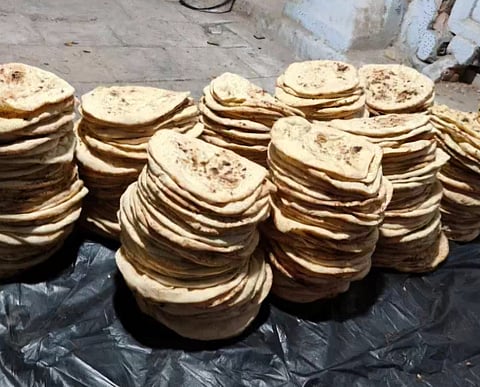

LUCKNOW: The Chhota Imambara in City of Nawabs is buzzing with hectic activity for the last nine days during the ongoing sacred month of Muharram as the royal kitchen (Bawarchikhana) comes alive with traditional preparation of 20,000 servings of royal offering (tabarruk- blessed food) daily till the day of Muharram which falls on Sunday.
Operated by the Hussainabad Trust, the Chhota Imambara Bawarchikhana prepares these offerings which are sent to various imambaras, mausoleums, and karbalas across the City of Nawabs to be distributed among those attending the majlis.
Muharram, the first and one of the most sacred months of the Islamic calendar, marks the beginning of the Hijri New Year. As per tradition, the exact date of Muharram is determined based on the sighting of the moon.
Moreover, tabarruk is also delivered to 325 Nawabi-e-Awadh (royal) families, while upholding a tradition of 186 years. Interestingly, the offerings are cooked in desi ghee over a wood fire and served in earthen vessels. A budget of Rs 47 lakh has been allocated for the entire arrangement.
According to Nawab Masood Abdullah, a descendant of Nawab-e-Awadh Tajdar Mohammad Ali Shah, his ancestors started this royal kitchen in 1839. Their tradition has been continuing for 186 years.
As per the menu of tabarruk, for five days, fried potato curry (gravy dish), bakharkhani (sweet red bread) and khamiri roti are distributed among the devotees attending majlis to mourn the martyrdom of Imam Hussain.
For the remaining four days, chana dal, khamiri roti and bakharkhani are distributed. The menu of the traditional Tabarruk happens to be completely vegetarian.
According to kitchen in-charge Murtaza, the royal kitchen remains active round the clock for nine days ahead of Muharram. In all, 60 persons, including cooks are engaged in this work. Tabarruk is cooked on slow wood fire. Pure ghee is used in this. Special care is taken of quality, that's why the craftsmen are closely monitored while cooking.
As per Murtaza, the work is divided among cooks as per their expertise. Some people make rotis, some prepare dal and vegetables. However, many deputed in the kitchen are assigned the duty of delivering tabarruk (blessed food).
Elaborating further, 14 quintals of flour is used for rotis and 11 quintals of potatoes are used to cook vegetable and two quintals of chickpea dal is cooked on a daily basis. It is packed properly. After that, it is sent for distribution to Imambaras, mausoleums, and Karbala.
Significantly, Muharram holds deep religious importance for both Sunni and Shia Muslims. While Sunnis mark the day by fasting, offering prayers, and reciting the Holy Quran, Shia Muslims take out mourning processions and the symbolic creation and burial of Taziyas.